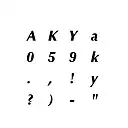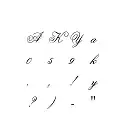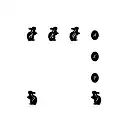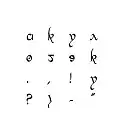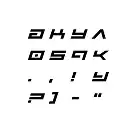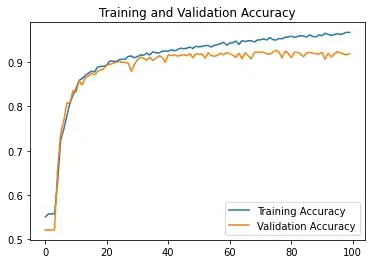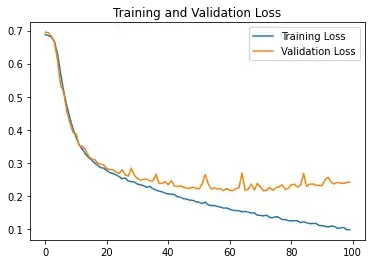I want to train a classifier that helps sorting out a large directory off fonts. I know that I could do a analysis on the font name and the contents of the TTF and OTF files, but for educational reasons I want to do it with machine learning.
For every font I rendered a sample image that helps me to decide if I want to uses the file in other projects. That means I have two classes 'yes' and 'no'. I also create manually labels for 4389 images (384x384). The images was chosen by random.
Actually I test a network similar to VGG16 and I get an accuracy of ~90%:
Model: "sequential_2"
_________________________________________________________________
Layer (type) Output Shape Param #
=================================================================
rescaling_2 (Rescaling) (None, 384, 384, 1) 0
conv2d_2 (Conv2D) (None, 384, 384, 64) 640
conv2d_3 (Conv2D) (None, 384, 384, 64) 102464
max_pooling2d_2 (MaxPooling (None, 192, 192, 64) 0
2D)
conv2d_4 (Conv2D) (None, 192, 192, 128) 73856
conv2d_5 (Conv2D) (None, 192, 192, 128) 147584
max_pooling2d_3 (MaxPooling (None, 96, 96, 128) 0
2D)
conv2d_6 (Conv2D) (None, 96, 96, 256) 295168
conv2d_7 (Conv2D) (None, 96, 96, 256) 590080
max_pooling2d_4 (MaxPooling (None, 48, 48, 256) 0
2D)
conv2d_8 (Conv2D) (None, 48, 48, 512) 1180160
max_pooling2d_5 (MaxPooling (None, 24, 24, 512) 0
2D)
conv2d_9 (Conv2D) (None, 24, 24, 512) 2359808
max_pooling2d_6 (MaxPooling (None, 12, 12, 512) 0
2D)
flatten_2 (Flatten) (None, 73728) 0
dense_12 (Dense) (None, 1024) 75498496
dense_13 (Dense) (None, 1024) 1049600
dense_14 (Dense) (None, 2) 2050
=================================================================
Total params: 81,299,906
Trainable params: 81,299,906
Non-trainable params: 0
_________________________________________________________________
And the statement to compile the network is:
model.compile(
optimizer=tf.keras.optimizers.Adam(
learning_rate=0.000001, beta_1=0.9, beta_2=0.999, epsilon=1e-07
),
loss=tf.keras.losses.SparseCategoricalCrossentropy(),
metrics=['accuracy']
)
The labeled images are split to 80/20 for training/test.
I think training is done at step 20. When I uses the network to label 1000 random new samples, I have 38 wrong predictions. That is an accuracy of 96%. I do not understand why the difference to the metric (90%) is so high.
Question:
What can I change to come to a higher accuracy? 90% helps a lot to label new samples, but it is still time consuming.
